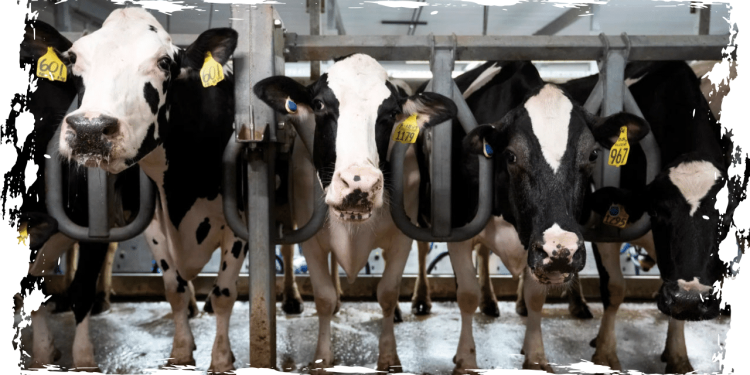The bird flu outbreak in dairy cows in the United States has prompted the creation of new, next-generation mRNA vaccines, similar to COVID-19 shots, which are currently being tested in both animals and humans.
The USDA will start testing a University of Pennsylvania researchers’ vaccine on calves next month. The theory is that if cow vaccination protects dairy workers, there would be fewer opportunities for the virus to infect people and change in ways that could lead to human-to-human transmission.
Meanwhile, the US Department of Health and Human Services has been speaking with manufacturers about potential mRNA flu vaccinations for humans, which, if necessary, could supplement millions of bird flu vaccine doses currently in the government’s possession.
“If there’s a pandemic, there’s going to be a huge demand for vaccines,” said Richard Webby, flu researcher at St. Jude Children’s Research Hospital in Memphis. “The more different (vaccine manufacturing) platforms are able to respond to that, the better.”
Since 2020, the bird flu virus has spread to a wider range of animal species in a number of countries. Researchers discovered it in dairy herds in the United States in March, but they believe it was present in cows as early as December. The USDA announced this week that they had discovered it in alpacas for the first time.
Despite their mild symptoms, at least three people who worked on farms with infected cows received a diagnosis of bird flu.
However, previous forms of the same H5N1 flu virus have been extremely fatal to people in other parts of the world. Officials are taking precautions in case the virus mutates, becomes more lethal, or spreads more easily from person to person.
Egg-based technology, in use for over 70 years, has traditionally manufactured most flu vaccinations. Injecting a candidate virus into fertilized chicken eggs and culturing them for several days allows the viruses to develop. We extract the fluid from the eggs and use it to make vaccines, priming the immune system with deceased or weakened viruses.
Rather than eggs, which are similarly vulnerable to bird flu-related supply limits, some flu vaccines are manufactured in massive cell vats.
Officials report that they have already developed two candidate vaccines for humans that seem to closely match the avian flu virus prevalent in dairy animals in the United States. The Centers for Disease Control and Prevention developed the seed strain from the circulating avian flu virus.
Federal health experts claim that the government has hundreds of thousands of vaccine doses in pre-filled syringes and vials ready for distribution within weeks if needed.
They assert that their mass antigen has the capacity to produce over 10 million additional doses, which they could pack, finish, and distribute within a few months. This week, CSL Seqirus, a manufacturer of cell-based flu vaccines, stated that the government has engaged it to fill and finish around 4.8 million of those doses. Last week, health officials in the United States stated that they might complete the work by late summer.
However, flu vaccine production lines are currently working on seasonal vaccinations for this fall, which would have to be delayed in order to produce millions of additional doses of bird flu vaccine. So the government has taken a different, faster approach: the mRNA technology utilized to create the principal vaccinations used against COVID-19.
We create messenger RNA vaccines by combining a small part of the virus’s genetic material. The genetic blueprint aims to guide the body in generating a protein that fosters immunity.
In very early human development, Moderna Pharmaceuticals already has a bird flu mRNA vaccine. Moderna stated that “we are in discussions with the US government on advancing our pandemic flu candidate.”
Pfizer has conducted a similar amount of work. In December, company researchers administered an mRNA vaccine to human volunteers against a bird flu strain that is comparable to—but not identical to—the one seen in cows. Since then, researchers conducted a lab trial in which blood samples from those participants were exposed to the strain found on dairy farms and discovered “notable increases in antibody responses,” according to Pfizer.
Penn immunologist Scott Hensley, in collaboration with mRNA pioneer and Nobel laureate Drew Weissman, developed the experimental doses of the cow vaccine. According to Hensley, the vaccination is identical to the Moderna one for humans.
In preliminary tests, mice and ferrets exhibited substantial levels of avian flu virus-fighting antibodies following immunization.
In another experiment, researchers vaccinated one set of ferrets, intentionally infected them, and compared the results to those of the unvaccinated ferrets. Hensley stated that all of the vaccinated animals lived, but the unvaccinated did not.
“The vaccine was really successful,” said Webby, whose lab collaborated with Hensley last year.
The cow study will be similar to the preliminary testing conducted on smaller animals. The objective is to initially vaccinate roughly ten calves, half with one dose and half with another. We will then collect and test their blood to determine the number of avian flu-fighting antibodies created.
According to Hensley, the USDA study will need to first find the appropriate dose for such a huge animal before examining whether it protects them in the same way that it does for smaller animals.
What “scares me the most is the amount of interaction between cattle and humans,” Hensley stated.
“We’re not talking about an animal that lives on a mountaintop,” he stated. “If this was a bobcat outbreak, I’d feel bad for the bobcats, but that’s not a big human risk.”
If a vaccine reduces the amount of virus in the cow, “then eventually we reduce the chance that a mutant virus that spreads in humans will emerge,” he explained.










